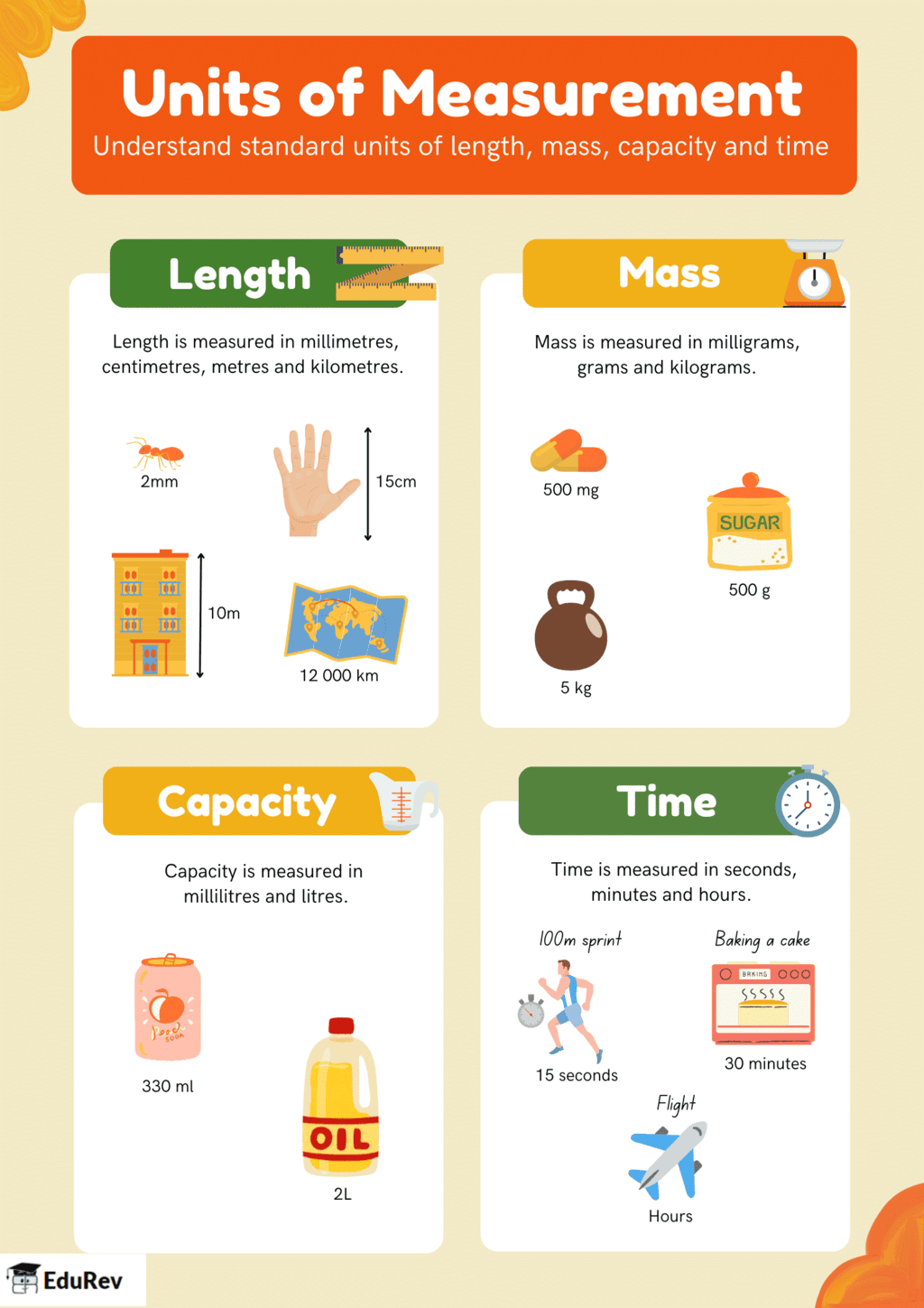Best Study Material for Class 5 Exam
Class 5 Exam > Class 5 Notes > Mathematics for Class 5: NCERT > Poster: How Big How Heavy
Poster: How Big How Heavy | Mathematics for Class 5: NCERT PDF Download

The document Poster: How Big How Heavy | Mathematics for Class 5: NCERT is a part of the Class 5 Course Mathematics for Class 5: NCERT.
All you need of Class 5 at this link: Class 5
|
31 videos|192 docs|41 tests
|
FAQs on Poster: How Big How Heavy - Mathematics for Class 5: NCERT
| 1. What factors determine how big or heavy an object can be? |  |
| 2. How can I measure the weight of an object accurately? |  |
Ans.To measure the weight of an object accurately, you can use a digital scale for precise readings or a balance scale for comparative measurements. Ensure that the scale is calibrated correctly and that the object is placed in the center of the platform. For larger objects that cannot be placed directly on a scale, you might need to use a load cell or a beam scale.
| 3. What is the difference between weight and mass? |  |
Ans.Weight refers to the force exerted by gravity on an object and is measured in newtons (N) or pounds (lbs). Mass, on the other hand, is the amount of matter in an object and is measured in kilograms (kg) or grams (g). While mass remains constant regardless of location, weight can change based on the gravitational pull of the environment.
| 4. How does gravity affect the perception of size and weight? |  |
Ans.Gravity plays a significant role in how we perceive weight; objects feel heavier in environments with stronger gravity. This means that the same object would weigh less on the Moon than on Earth due to the Moon's weaker gravitational pull. However, the object's size remains unchanged regardless of the gravitational force acting on it.
| 5. Are there any methods to estimate the weight of an object without a scale? |  |
Ans.Yes, you can estimate the weight of an object using various methods. One common approach is to use known weights for comparison, like using a balance scale with standard weights. Another method is to calculate the weight based on the volume and density of the material, using the formula: weight = volume × density. Additionally, some people use the water displacement method for irregularly shaped objects, measuring how much water is displaced to estimate the object's volume and weight.
Related Searches

















